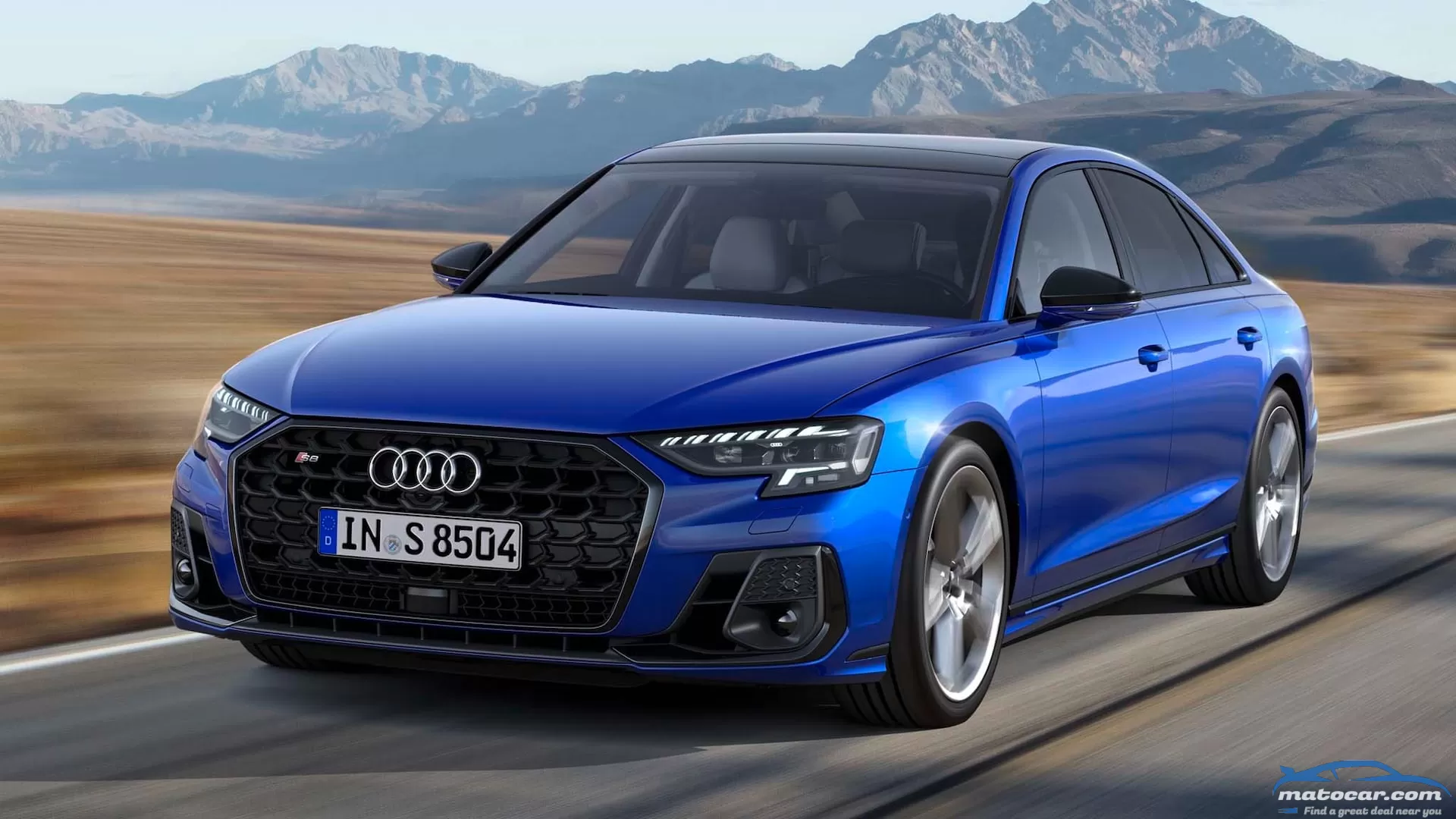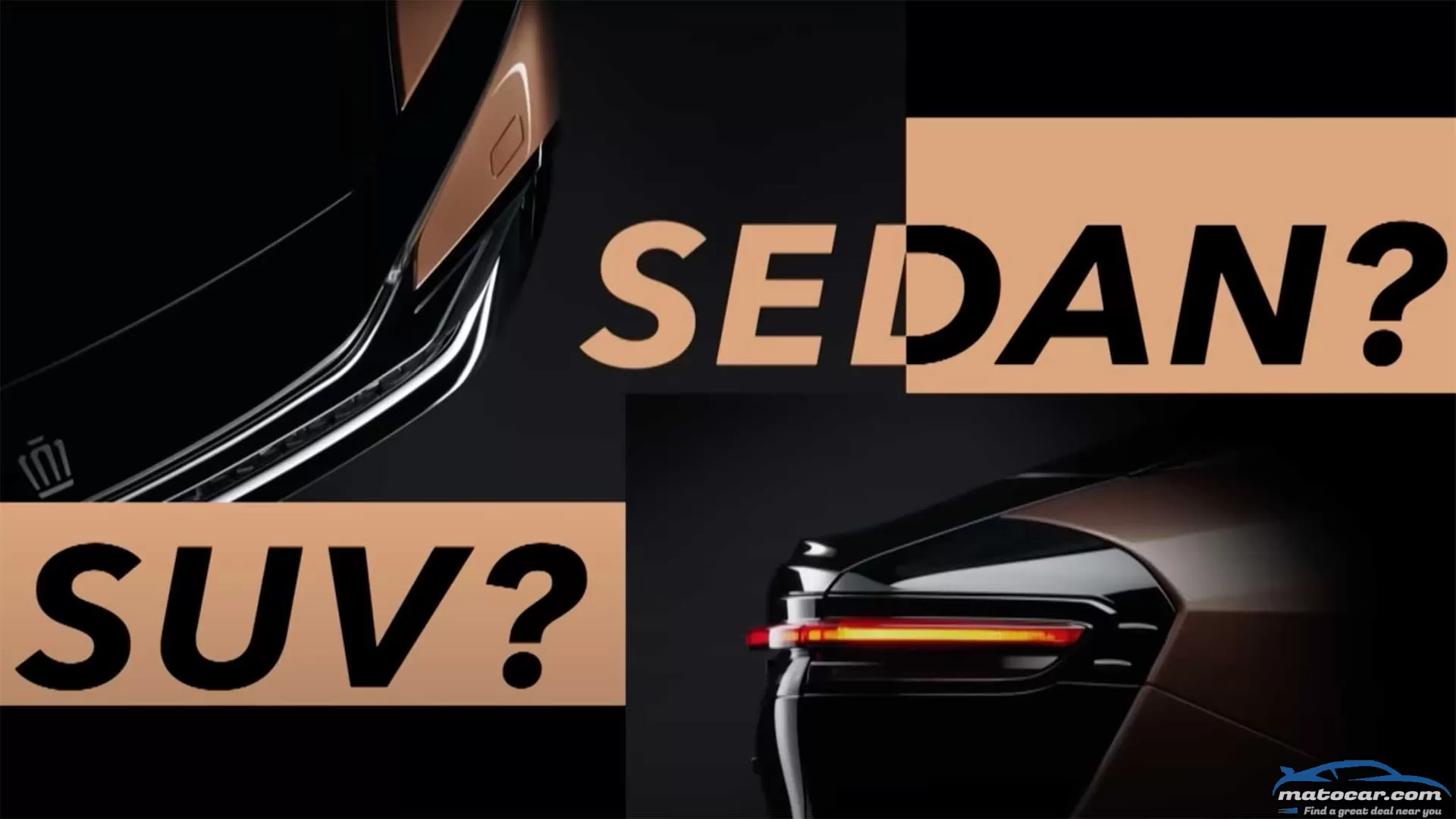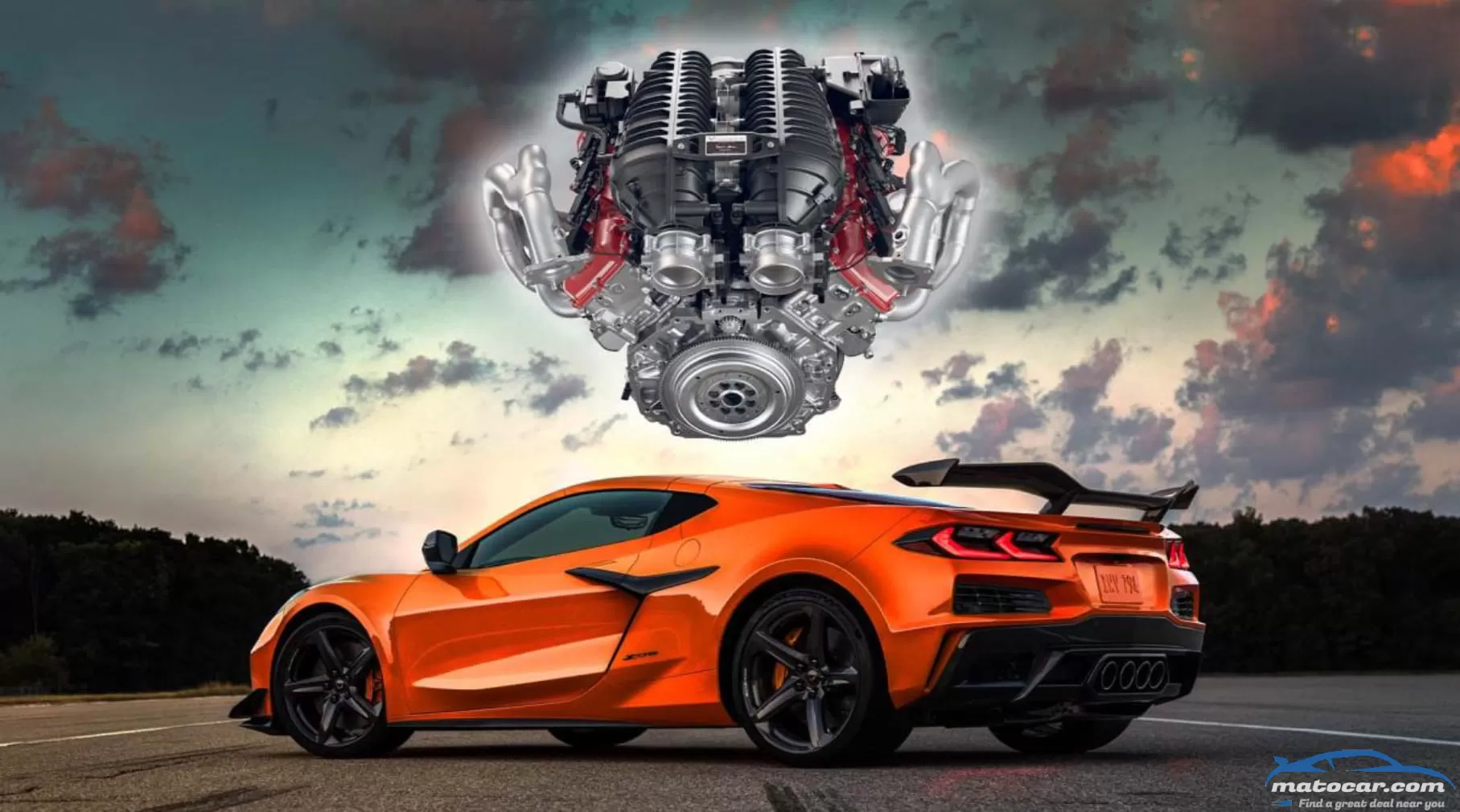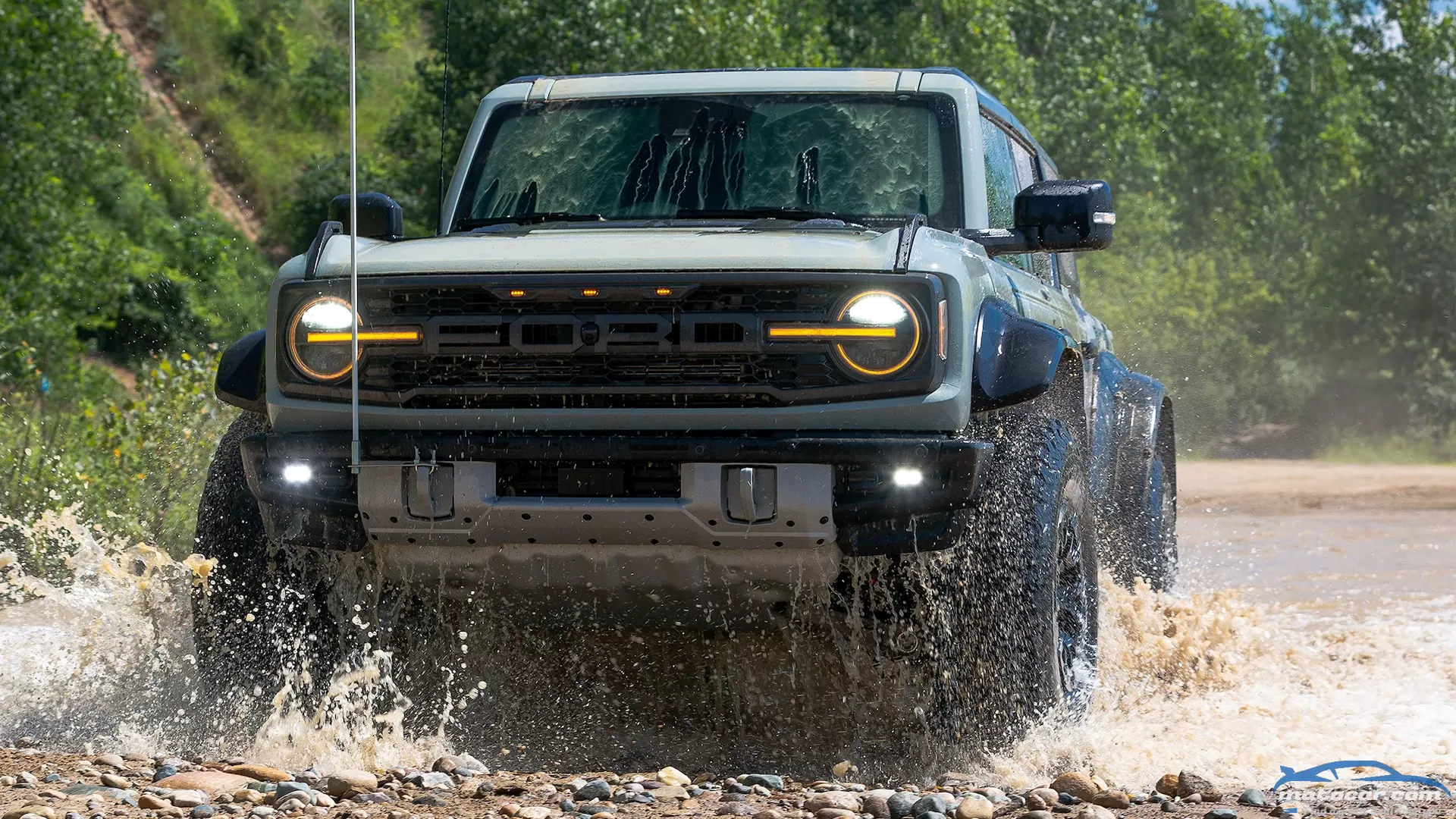2022 Audi S8: The Stealth Sport Sedan Is Baaaack

Audi's S8 has always flown under the radar. Even the iconic D3 model, launched in 2006, hid its light under a bushel, with a discreet "V10" badge, silver side mirror caps, and quad exhausts the only clues to the 450-hp of mellifluous madness delivered by the Lamborghini Gallardo-derived 5.2-liter V-10 lurking under the hood. The refreshed 2022 S8 maintains the stealth sport sedan tradition.
Sadly, the charismatic V-10 is long gone. The D4-generation S8 launched in 2012 with the Audi-developed EA824 4.0-liter twin-turbo V-8 that made 520 horsepower and 421 lb-ft of torque under the hood. For the current-generation S8 that arrived in 2016, that engine was in turn replaced by the Porsche-developed EA825 4.0-liter twin-turbo V-8, which also sees duty in the Porsche Panamera, Bentley Continental GT, and Lamborghini Urus.
That engine carries over unchanged in the 2022 refresh of the S8, its 563 hp and 590 lb-ft of torque delivered with a baritone burble that scarcely rises above a murmur even in Dynamic mode. It may sound like a more plebeian powertrain on paper, but there's nothing wrong with what it delivers: The 2023 S8 will surge from 0 to 60 mph in 3.8 seconds, a full 1.1 seconds quicker than its 550-pound-lighter Lambo-powered predecessor could manage.
In simple terms, the 2022 S8 is an A8 with the lot. Standard equipment includes rear-wheel steering, a sport rear differential, and predictive active suspension. The suspension uses actuators at each wheel to counter cornering loads rather than electrically twisting a stabiliser bar across the axle, and it delivers a surprisingly supple ride with very low noise levels even though the big sedan scarcely rolls through corners or pitches under acceleration and braking.
The 2022 face-lift, which also extends across the regular A8 range, is little more than a subtle nip and tuck. The most visible change is at the front, where the single-frame grille has been made even bolder and more aggressive. It's still roughly hexagonal in shape, but it's wider, and the corners on either side have been positioned closer toward the bonnet. The new grille, which makes the slightly slab-sided S8 look lower and wider, is flanked by more upright air intakes and redesigned headlights.
At the rear, bazooka-caliber chrome exhaust pipes peek out from under a rear bumper that has been redesigned to incorporate a new diffuser graphic. Customizable digital OLED taillights feature a continuous light strip that runs the full width of the car.
America's S8, like those in Canada, China, and South Korea, is built on the long-wheelbase A8L platform. That means a 5.1-inch stretch in the wheelbase compared with the rest of the world's S8, but the standard rear-wheel steering system endows the car with surprising agility in tight corners. High-speed stability is superb.
With their engine slung out ahead of the front wheels, big Audis have always tended to push when you gas the accelerator a shove. But despite carrying 56 percent of its weight over the front axle, the S8 turns in nicely, and the sport diff ensures the rear wheels get maximum torque to the tarmac. This is a big sedan that is calm and fast, confident and comfortable, the sort of car you could happily hustle 600 miles through the Rockies in a day and step out at the end of it feeling relaxed.
Four new colors have been added to the S8 exterior palette, three of them available in the U.S.: District Green, Firmament Blue, and Ultra Blue, the last of which is the signature shade for the 2022 refresh (which may end up arriving in American dealers as a 2023 model). The standard wheels are 20-inch double-five-spoke pieces, with 10-spoke 21-inchers in either silver or black available as an option. Europeans can order their S8 with a full white leather interior. American customers are offered black or black with either cognac brown or merlot red inserts.
No, nobody's going to look twice at the new S8 when it arrives here in spring, priced from $118,995 (a decrease of $12,950 from the 2021 model). Especially if you order one in anything other than the punchy Ultra Blue. But that's an intrinsic element of this car's appeal.
The 2022 Audi A8 story is a mix of good and bad news. The good news is the subtle refresh gives Audi's somewhat conservative flagship sedan a more arresting presence on the road, and all cars come with the sportier S-Line design tweaks being offered on the A8 for the first time, plus the customizable OLED rear lights.
The bad news is the model lineup has been rationalized. The PHEV powertrain will no longer be offered, and if you want a V-8, you'll have to reach for the top shelf and order the S8. Mind you, that's not a bad option.
What that means is Audi's flagship luxury sedan now comes in only one flavor for America: long wheelbase and with the 340-hp, 369-lb-ft 3.0-liter V-6 under the hood, which is known as the A8L 55 TFSI Quattro in Audi-speak. Prices start at $87,595.
The $3,400 Executive package adds 20-inch wheels—19s are standard—and adaptive cruise with traffic jam assist and turn assist, among other things, while the $3,250 Comfort Plus package includes goodies such as noise-reducing dual-pane glass and massaging front seats. The $5,400 Luxury bundle brings rear-wheel steering plus interior upgrades such as power rear seats with lumbar and memory functions.
New for the A8 worldwide and available on U.S.-spec cars are a pair of optional Black Optic packages, one priced at $1,750 that offers high-gloss black exterior trim items and silver and black multispoke 21-inch wheels, the other priced at $2,750 and adding black-painted 10-spoke 21-inch wheels, black Audi badges,\ and black-painted brake calipers.
Looks good! More details?2022 Audi S8 Specifications PRICE $118,995 LAYOUT Front-engine, AWD, 5-pass, 4-door sedan ENGINE 4.0L/563-hp/590-lb-ft twin-turbo direct-injected DOHC 32-valve V-8 TRANSMISSION 8-speed automatic CURB WEIGHT 5,300 lb (MT est) WHEELBASE 123.1 in L x W x H 208.7 x 76.6 x 58.5 in 0-60 MPH 3.8 sec (mfr est) EPA FUEL ECON, CITY/HWY/COMB 14/23/17 mpg EPA RANGE, COMB 369 miles ON SALE Spring 2022 Show AllYou may also like
The Toyota Crown is, in Japan, an upmarket nameplate. Long a sedan, it recently became available in SUV form—based on the current Highlander three-row crossover—and, per a Japanese Toyota website, is about to turn over a new leaf. On July 15, Toyota promises a new Crown will appear, but as for what form this Crown will take, the automaker's offering precious little to go on besides a few cryptic hints and a new YouTube teaser with flashes of the new car.Here's what the website—with the url ending in "newcrown2022"—says when you first open it: "Sedan? SUV?" Before an animation replaces that cryptic text with "Discover your Crown." A countdown timer at the bottom of the page notes the wait until the official reveal on July 15, 2022.We could understand if you have no idea what to make of the sedan/SUV question, whether that means the Crown will be available (again) in both forms, or whether it hints at some new direction. The internet seems to think the lifted car pictured at top is the new Crown, which would make some sense given the sedan-UV tease on Toyota's site. The images of this bizarre car-SUV mashup were recently patented by Toyota, and we found them on Japan's patent database.With Toyota's release of the video above, the patent images seem confirmed. The glimpses of the Crown's headlights, taillights, and other details in the YouTube clip seem to jibe with those in these patent filings.We'll find out for sure later this week when the new Crown is unveiled, and whether the model will finally make it to the U.S. market, a move hinted at through Toyota's trademark of the name here.This story originally published July 6, and has since been updated to reflect new teasers and previews from Toyota.
Late last year, we spent a couple hours peppering GM engineers with questions during a development drive of the 2023 Chevrolet Corvette Z06, then we interviewed a different set of engineers during a photo shoot of the car and its LT6 engine. Now Chevy has presented a 3.5-hour deep-dive webinar divulging even more of the enabling race-inspired technology behind the world's most potent naturally aspirated production-car engine. We've done our best to boil it down to 23 slides crammed full of the most essential knowledge—nuggets you'll need to explain to your pals at the pub why America's supercar has earned a place as one of history's greatest combustion-powered sports cars.
ford bronco Full OverviewProsDune-bashing, mud-splashing, rock-crawling funShockingly good road mannersUnfazed by potholes and frost heaves ConsHalf-ton weight gainCould have had a V-8Slow steering makes for busy handsFrom the driver's seat of the 2022 Ford Bronco Raptor, a pond looks like a puddle, a boulder field looks like a gravel road, and a Mitsubishi Mirage looks like a speed bump. This $70,095 off-road colossus—it's 85.7 inches wide and has 37-inch-tall tires—bounds across the gnarliest terrain and towers over traffic with an air of invincibility that shrinks everything in its path. Objects in the windshield are larger than they appear when you're riding this high, literally and metaphorically.It doesn't take long for this Raptor's immense capability to go to your head. In the same way that the best Porsches make drivers into heroes, the Bronco Raptor turns the person behind the wheel into a villain—reckless, all powerful, above the law. Driving a Bronco Raptor means fighting an incessant urge to straight-line every roundabout. You'll fantasize about blasting by gridlock traffic on the shoulder and turning every open space you pass into an off-road park.Roads? Where We're Going, We Don't Need RoadsTo keep those anti-social and imprisonable impulses at bay, it's important to regularly exercise the baddest Bronco in its natural habitat, which happens to be wherever civilization isn't. Ford has built the Raptor brand around high-speed desert-running antics, and the Bronco abides with big-barrel Fox Racing dampers calming the suspension as it strokes through up to 13 inches of travel in the front and 14 in the rear. Electronically adjustable valving adapts to whatever happens to be pummeling the suspension at any given moment, while internal bypasses cushion the biggest hits.Translation: The harder and faster you drive, the less the Bronco Raptor is fazed by the terrain. In its signature Baja mode, this SUV combines sports-car reflexes with the compliance of a bounce house. The 10-speed automatic cracks off up- and downshifts with perfect timing and the BF Goodrich All-Terrain T/A KO2 tires find traction where there is none, all while bombing over terrain that would fold a Honda in half.This Bronco isn't a one-trick pony, though. It will just as eagerly and expertly pick its way through a boulder-strewn ravine with the 360-degree camera system putting your spotter out of a job. It can wade into a waist-deep swamp and negotiate a mud-slicked trail (as long as those washtub fenders fit between the trees). There's a dizzying amount of adjustability in the Raptor's four exhaust modes, three steering settings, four damper calibrations, locking front and rear differentials, front anti-roll-bar disconnect, and the transfer case that offers rear-wheel drive, high-range four-wheel drive, or low-range four-wheel drive. Trying to tune all that via buttons on the steering wheel, atop the dash, and on the center console proves tedious, but Ford has smartly included shortcuts to several useful combinations via the preset GOAT modes (Normal, Off-Road, Rock Crawl, Baja, Sport, Tow/Haul, Slippery) and a customizable MyMode.Those Road Manners Aren't Shabby, EitherThe Bronco Raptor's 0.67 g of lateral grip and 160-foot 60-mph stopping distance are atrocious by any objective measure of on-road performance, but those numbers bury the subjective excellence of how this truck steers, handles, and rides when it returns to the civilized, asphalt world. Thanks to the impossibly wide stance, the body doesn't roll in corners so much as it squats over the outside wheels, creating a surprising sense of stability.The heavy hiking boots pound the pavement and send tremors into the body at city speeds, but just as it does off road, the Raptor becomes supple—even graceful—the faster you go. On the highway, it floats over expansion joints and potholes, making it the perfect vehicle for traversing our pre-apocalyptic infrastructure in comfort and without fear of damaging a tire.At 3.2 turns lock-to-lock, the steering feels slow when you're sliding the Raptor sideways on dirt or hustling down a tight two-lane. Nevertheless, the steering wheel would be at home in a Mazda Miata, both for the way its sculpted rim fits your hands and its exacting precision.How Quick Is the Ford Bronco Raptor?If there's a weak spot in the Raptor's game, it's the engine. The twin-turbo 3.0-liter V-6 raises output by 103 horsepower and 30 lb-ft of torque compared to the 2.7-liter unit available on lesser Broncos. Yet you wouldn't guess it's packing 418 horsepower from the driver's seat or looking at the numbers. That's because this leviathan weighs 5,778 pounds, or nearly 1,000 more than the V-6-powered Bronco Outer Banks we tested last year. The Raptor hides that weight well in cornering, but it's palpable under acceleration.The Raptor covered 0-60 mph in 6.3 seconds and cleared the quarter mile in 14.9 seconds in MotorTrend testing, both just 0.3 second quicker than the Outer Banks model. That's significantly slower than we originally predicted and worse than what the Raptor's weight-to-power ratio suggests it should be capable of. That also places it two whole seconds behind its chief rival, the 470-hp Jeep Wrangler Rubicon 392. Yet no matter what we tried at the track, the Raptor returned consistently sluggish runs.The engine also fails to deliver on this truck's nickname, "Braptor." It never so much as blips, blats, rips, snorts, burbles, chortles, barks, or braps. The adjustable exhaust is performative theater, merely amplifying the engine's thrum at part-throttle and low rpm. At full throttle in any mode, the V-6 sounds too flat, too muffled, and too high-pitched for a truck this rowdy.The SUV That Conquers AllIn a motoring world overrun with Wranglers and 4Runners, the Bronco Raptor still stands out as one of a kind. With its appetite for high-speed hooning, its composure on paved roads, and its ability to tackle any type of terrain, it's as close as you'll come to finding a truck that will drive anywhere and over anything. Try to resist the urge.Looks good! More details?2022 Ford Bronco Raptor Specifications BASE PRICE $70,095 PRICE AS TESTED $78,750 VEHICLE LAYOUT Front-engine, 4WD, 5-pass, 4-door SUV ENGINE 3.0L Twin-turbo direct-injected DOHC 24-valve 60-degree V-6 POWER (SAE NET) 418 hp @ 5,750 rpm TORQUE (SAE NET) 440 lb-ft @ 2,750 rpm TRANSMISSION 10-speed automatic CURB WEIGHT (F/R DIST) 5,778 lb (55/45%) WHEELBASE 116.5 in LENGTH x WIDTH x HEIGHT 191.0 x 85.7 x 77.8 in 0-60 MPH 6.3 sec QUARTER MILE 14.9 sec @ 91.0 mph BRAKING, 60-0 MPH 160 ft LATERAL ACCELERATION 0.67 g (avg) EPA CITY/HWY/COMB FUEL ECON 15/16/15 mpg EPA RANGE, COMB 318 miles ON SALE Now Show All




0 Comments